Abstract
The effect of antacid on the absorption of lomefloxacin (LFLX) in humans was studied. When LFLX was orally administered concomitantly with aluminum- and magnesium-containing antacids under fasting conditions, its level in plasma decreased by one-half and its area under the concentration-time curve was reduced by 40% compared with the levels observed after treatment with LFLX alone. The urinary recovery value also decreased by 40%. No such effects were noted after coadministration of LFLX and a nonmetallic antacid. This study confirmed the existence of chelate complexes of LFLX with Al3+ and Mg2+ and examined the chelating strength. The stability constants of LFLX with Al3+ and Mg2+ were measured and compared with those of ofloxacin and norfloxacin; little difference was observed among them. LFLX was found to bind more strongly with Al3+ than with Mg2+. Further, the existence of chelate formation was proven by 13C-nuclear magnetic resonance spectroscopy. The decrease in the LFLX level in plasma in humans could be explained by a reduced absorption of the Al(3+)- and Mg(2+)-LFLX chelate complexes.
Full text
PDF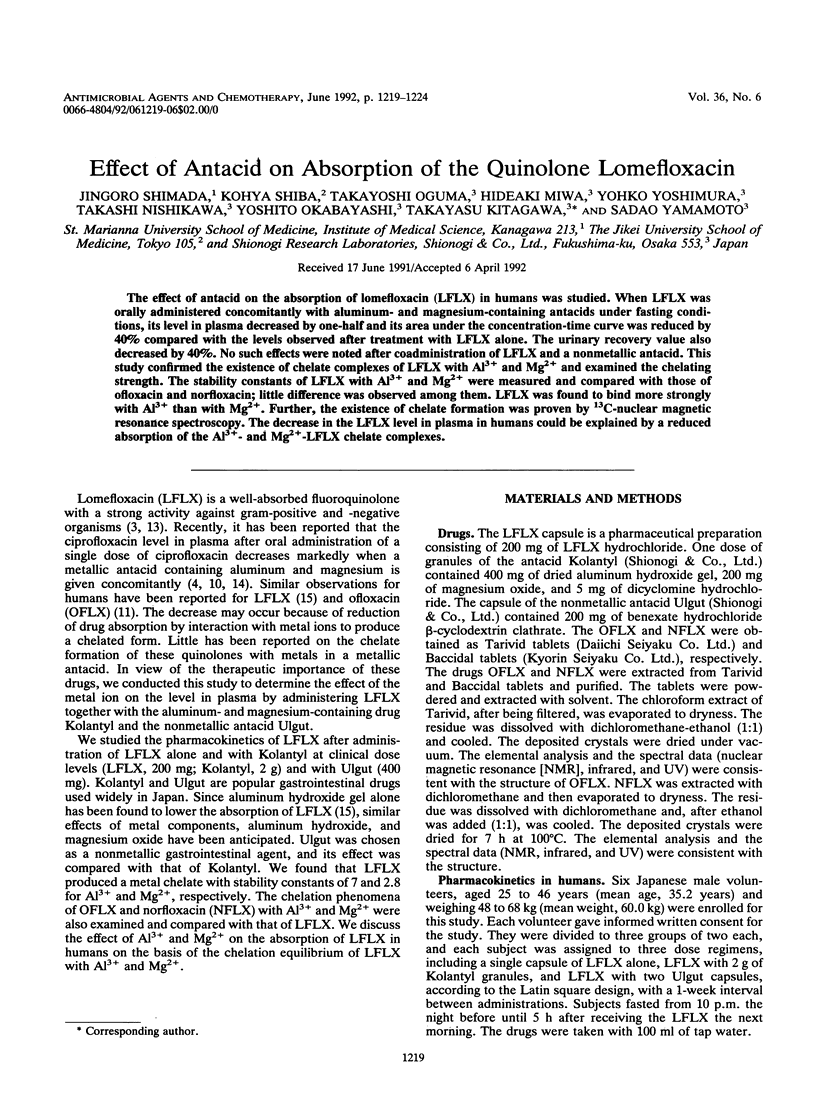
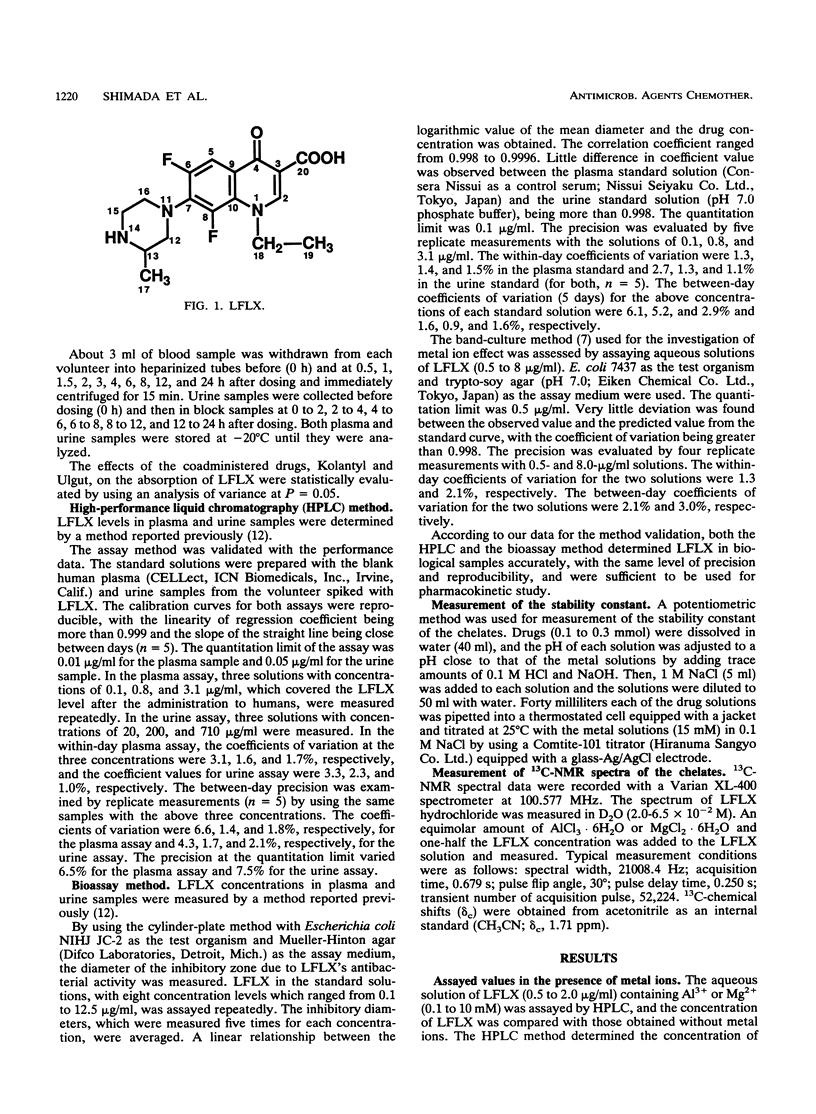
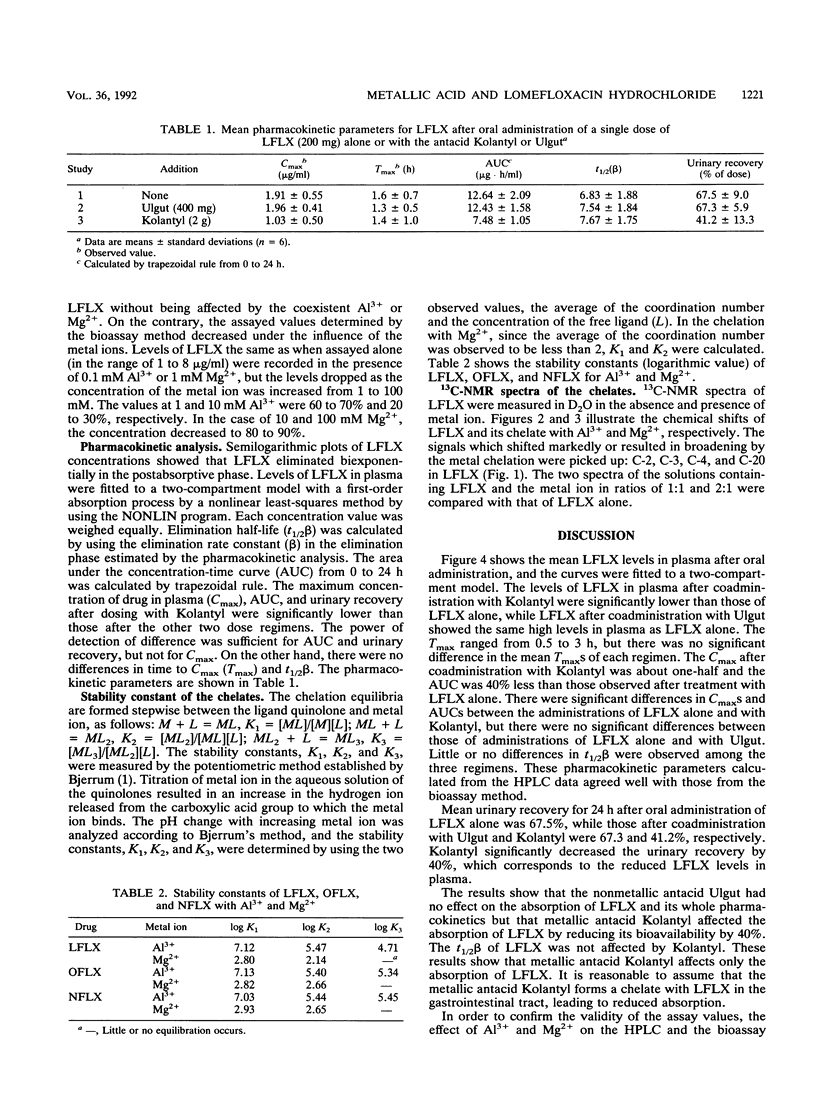
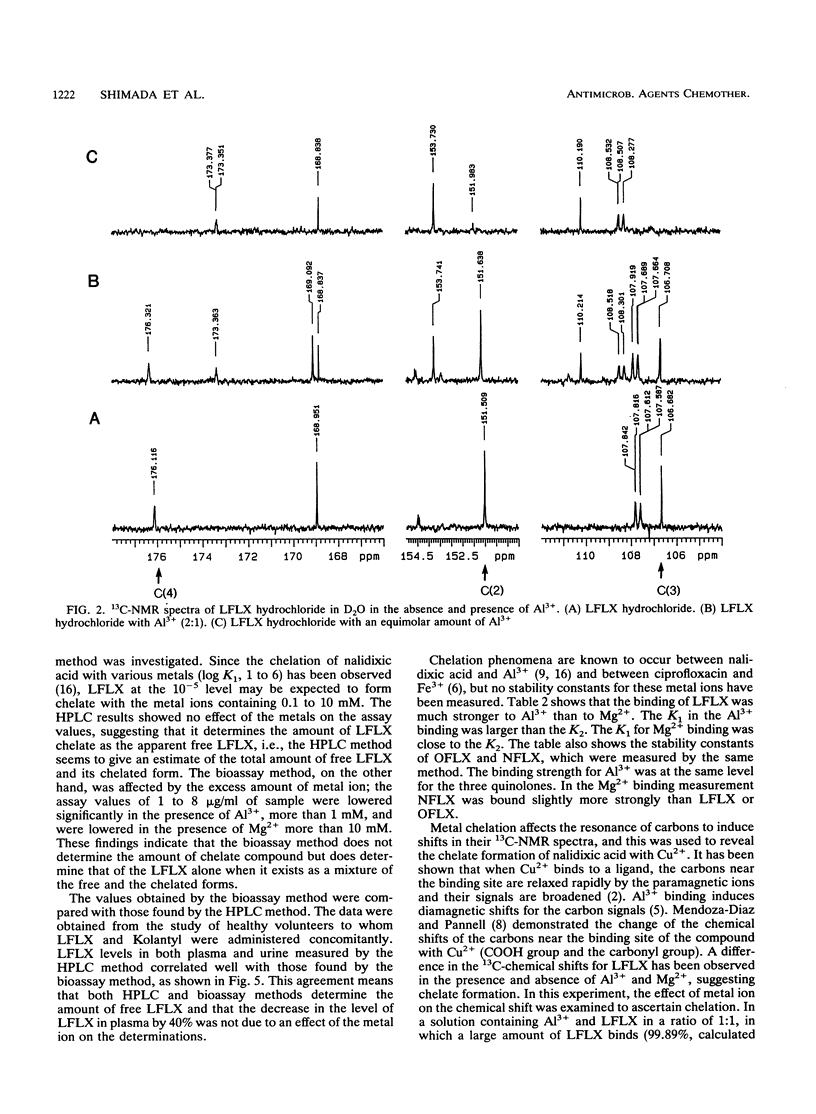
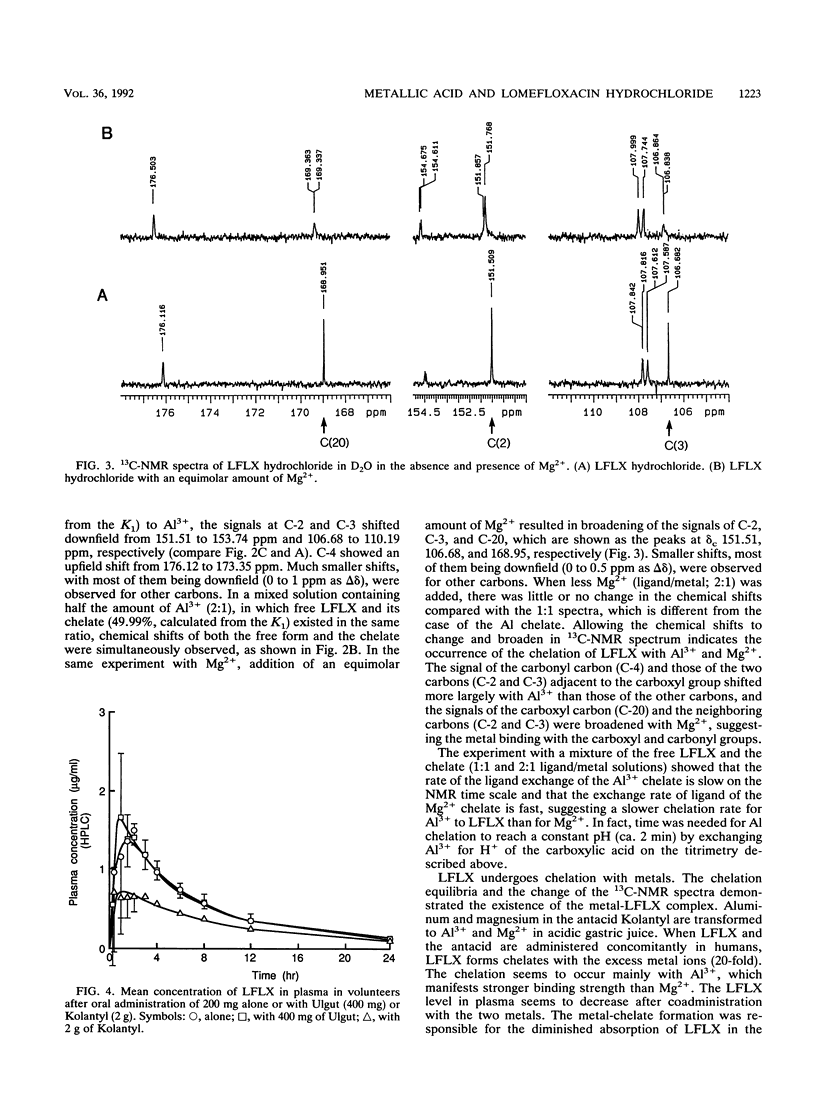
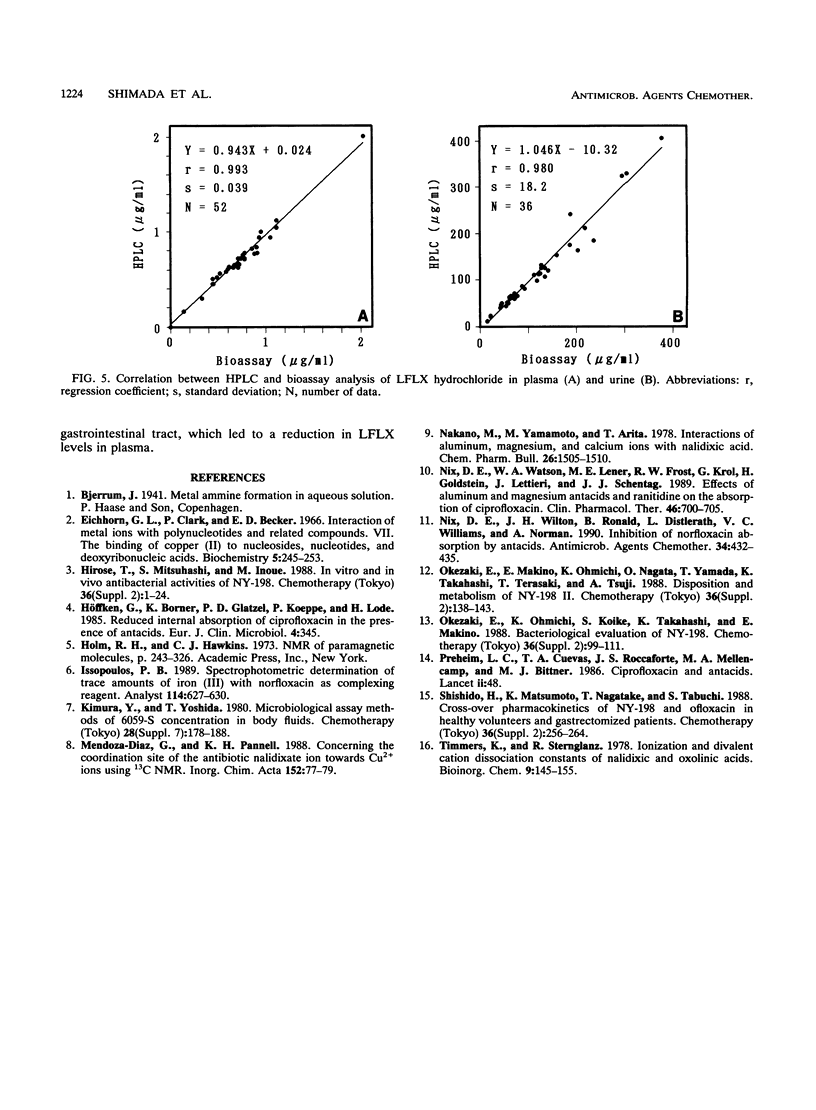
Selected References
These references are in PubMed. This may not be the complete list of references from this article.
- Eichhorn G. L., Clark P., Becker E. D. Interactions of metal ions with polynucleotides and related compounds. VII. The binding of copper(II) to nucleosides, nucleotides, and deoxyribonucleic acids. Biochemistry. 1966 Jan;5(1):245–253. doi: 10.1021/bi00865a032. [DOI] [PubMed] [Google Scholar]
- Höffken G., Borner K., Glatzel P. D., Koeppe P., Lode H. Reduced enteral absorption of ciprofloxacin in the presence of antacids. Eur J Clin Microbiol. 1985 Jun;4(3):345–345. doi: 10.1007/BF02013667. [DOI] [PubMed] [Google Scholar]
- Issopoulos P. B. Spectrophotometric determination of trace amounts of iron(III) with norfloxacin as complexing reagent. Analyst. 1989 May;114(5):627–630. doi: 10.1039/an9891400627. [DOI] [PubMed] [Google Scholar]
- Nakano M., Yamamoto M., Arita T. Interactions of aluminum, magnesium, and calcium ions with nalidixic acid. Chem Pharm Bull (Tokyo) 1978 May;26(5):1505–1510. doi: 10.1248/cpb.26.1505. [DOI] [PubMed] [Google Scholar]
- Nix D. E., Watson W. A., Lener M. E., Frost R. W., Krol G., Goldstein H., Lettieri J., Schentag J. J. Effects of aluminum and magnesium antacids and ranitidine on the absorption of ciprofloxacin. Clin Pharmacol Ther. 1989 Dec;46(6):700–705. doi: 10.1038/clpt.1989.207. [DOI] [PubMed] [Google Scholar]
- Nix D. E., Wilton J. H., Ronald B., Distlerath L., Williams V. C., Norman A. Inhibition of norfloxacin absorption by antacids. Antimicrob Agents Chemother. 1990 Mar;34(3):432–435. doi: 10.1128/aac.34.3.432. [DOI] [PMC free article] [PubMed] [Google Scholar]
- Preheim L. C., Cuevas T. A., Roccaforte J. S., Mellencamp M. A., Bittner M. J. Ciprofloxacin and antacids. Lancet. 1986 Jul 5;2(8497):48–48. doi: 10.1016/s0140-6736(86)92596-1. [DOI] [PubMed] [Google Scholar]
- Timmers K., Sternglanz R. Ionization and divalent cation dissociation constants of nalidixic and oxolinic acids. Bioinorg Chem. 1978 Aug;9(2):145–155. doi: 10.1016/s0006-3061(00)80286-0. [DOI] [PubMed] [Google Scholar]


